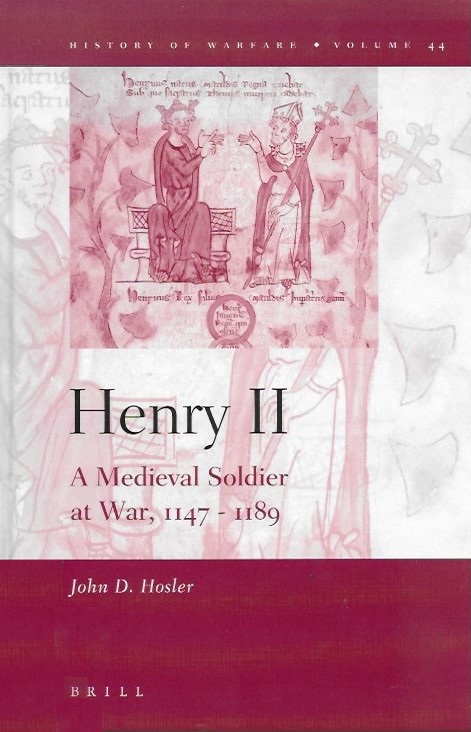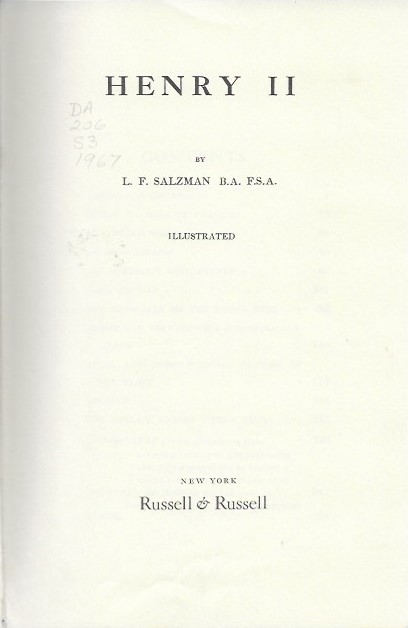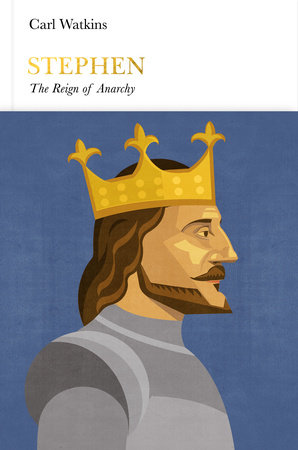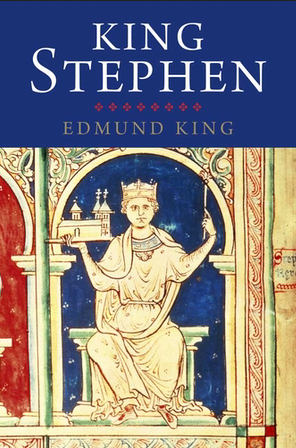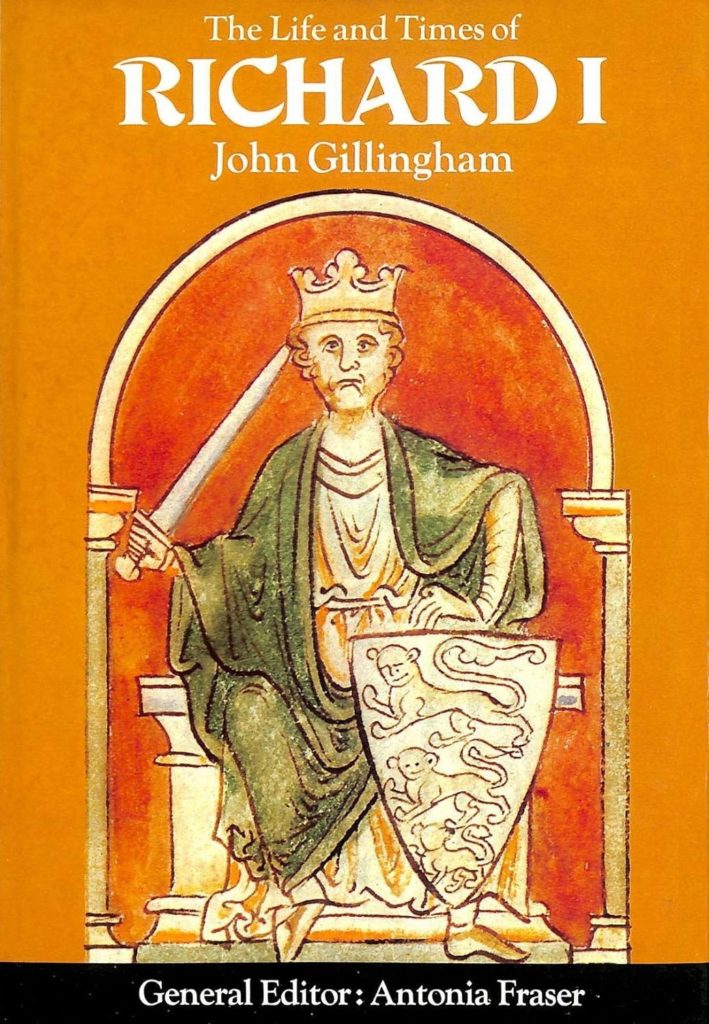
John Gillingham has written a diverse range of books on medieval England, yet if there is one subject which he has made his own, it’s Richard Cœur de Lion. In addition to his work on the Angevin empire over which he ruled, Gillingham has written three biographies of Richard, as well as a collection of essays focused on the king. His contribution to Weidenfeld and Nicolson’s “Kings and Queens of England” series was the first of these, a deft overview of Richard’s activities that emphasizes his participation in the Third Crusade.
It’s a choice that likely reflects the target audience for the series of a popular readership, one that is underscored by an extensive use of photographs illustrating the locations and events described in the text. Yet for all his academic qualifications, Gillingham never talks down to his audience, providing instead a clearly-written text that offers a straightforward explanation of his subject’s activities. Beginning with an opening chapter that skillfully summarizes both 12th century England and Richard’s life prior to his accession to the throne, he moves on swiftly to his preparations to join the Crusades. Richard seems almost monomaniacally focused in these pages on his involvement, determined to get there as fast as circumstances will allow.
The three years that Richard spends on journeying to the Holy Lands and campaigning there takes up half of Gillingham’s book. These chapters provide a dramatic recounting of his activities, focusing on his activities as both a general and a statesman. Gillingham’s portrayal of Richard is positive to the point of glowing, as he explains how he managed both the complex diplomatic environment of the Mediterranean and the relationships with his prickly and ambitious allies. Gillingham regards Richard as the outstanding military commander among the crusaders, and explains clearly why the king made the judgments he did on his campaign and how his achievements were the most that were possible given the circumstances that he faced.
Because of Gillingham’s focus, the events of the final six years of Richard’s are condensed into just two chapters. This reflects at least in part the lack of information available about him, as Richard’s captivity in Germany does not seem to have generated many records for Gillingham to use. But the choice seems more questionable when it comes to covering Richard’s arguably more significant clash with Philip Augustus, given both the span of years involved and the significance of the war to the history of the two realms. While the events are efficiently described, the contrast with the level of detail provided for Richard’s Crusades escapades is striking. Though I’m reserving any final judgment in this respect until I’ve seen the coverage of this period in the other biographies of Richard that I plan to read (including Gillingham’s contribution to the English Monarchs series), it does seem an unwarranted and distorting choice.
This is perhaps the greatest flaw in what s otherwise a highly enjoyable book. Gillingham goes far in this book in demonstrating why Richard enjoys the standing he possesses today in the popular imagination. While the imbalanced coverage of his reign makes it difficult to imagine that this will be the final “one book” on which I will settle, as an introduction to a monarch I knew little it does a fine job of giving me the basics while whetting my interest for reading further. In that respect Gillingham does an admirable job in a way that many authors would envy.


